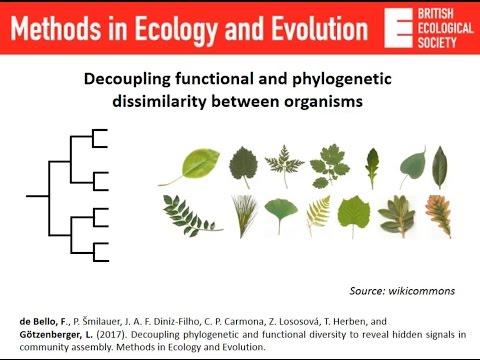Title: New Study Reveals Impact of Land Use Intensification on Functional Trait Diversity
In an era where human activities increasingly dictate the trajectory of ecosystems, a groundbreaking study published in Nature sheds light on the critical thresholds of functional trait diversity affected by land use intensification. As global demand for agricultural and urban expansion accelerates, understanding how these changes influence the intricate web of life becomes imperative. This research highlights the intricate relationship between land use practices and biodiversity, revealing alarming trends that could have far-reaching implications for ecosystem health and resilience. By examining various landscapes and their corresponding functional traits, the study not only underscores the urgency of sustainable land management but also offers a crucial perspective on maintaining biodiversity in the face of relentless environmental pressures. As policymakers and conservationists grapple with escalating land use challenges, the findings present a clarion call for immediate action to safeguard the future of our planet’s ecosystems.
Understanding Functional Trait Diversity in Ecosystems Affected by Land Use Intensification
Recent studies reveal critical insights into how land use intensification impacts functional trait diversity across various ecosystems. This diversity is essential for maintaining ecosystem functionality, resilience, and stability, particularly as human activities such as agriculture, urban development, and deforestation continue to reshape landscapes. Researchers have identified key thresholds of functional diversity that, when crossed, can lead to significant changes in ecosystem services. Notably, ecosystems subjected to moderate to high levels of land use experience a marked reduction in trait diversity, which can directly affect species interactions and overall ecological health.
To illustrate these effects, data collected from diverse habitats demonstrate distinct patterns correlating land use intensity with functional diversity metrics. For instance, a recent comparative analysis highlighted that ecosystems subjected to intensive farming practices show diminished functional trait variation compared to more naturally preserved environments. The table below summarizes notable findings from this analysis:
| Land Use Type | Functional Trait Diversity Index | Impacted Ecosystem Services |
|---|---|---|
| Intensive Agriculture | 0.25 | Pollination, Water Regulation |
| Extensive Agriculture | 0.45 | Soil Fertility, Habitat Provision |
| Urban Areas | 0.35 | Air Quality, Temperature Regulation |
| Protected Natural Areas | 0.75 | Wildlife Habitat, Biodiversity Conservation |
Assessing the Impact of Agricultural Practices on Biodiversity and Ecosystem Functionality
The intensification of agricultural practices presents both opportunities and challenges for biodiversity and ecosystem functionality. As land use intensification escalates, critical thresholds of functional trait diversity are affected, leading to notable shifts in ecological balance. Ecosystem services, which include pollination, nutrient cycling, and soil fertility, are intrinsically linked to the diversity of species present within agricultural landscapes. Increased land use pressure often results in habitat fragmentation, soil degradation, and a reduction in the diversity of plant and animal species, which can diminish the stability and resilience of ecosystems. As a result, a clear understanding of these dynamics is essential for promoting sustainable agricultural practices that support both productivity and ecological health.
Research indicates that specific agricultural practices significantly influence the functional traits of species within an ecosystem. For instance, the following aspects of land use are particularly impactful:
- Crop monocultures: Reducing biodiversity and resilience.
- Chemical inputs: Altering species interactions and community structures.
- Soil management: Affecting nutrient availability and microbial diversity.
To visualize the impact of these practices, the table below illustrates the relationship between land use intensity and species diversity and function:
| Land Use Intensity | Species Diversity Index | Functional Trait Richness |
|---|---|---|
| Low | 0.85 | 15 |
| Moderate | 0.65 | 10 |
| High | 0.40 | 5 |
This data indicates a clear trend: as land use intensity increases, both species diversity and functional trait richness diminish, highlighting the urgent need for strategic agricultural planning and management to mitigate impacts on biodiversity and ensure ecosystem functionality.
Strategies for Enhancing Trait Diversity to Mitigate Land Use Effects on Natural Habitats
As land use intensifies, it prompts an urgent need for innovative strategies to enhance the diversity of functional traits within ecosystems. One effective approach is promoting agroecological practices, which focus on ecological principles to optimize both agricultural productivity and biodiversity. Implementing mixed cropping systems can increase habitat complexity and benefit a variety of organisms, fostering a dynamic ecosystem capable of withstanding land use pressures. Additionally, rewilding efforts in previously degraded landscapes can help restore native flora and fauna, thus reviving the functional diversity that is essential for maintaining ecosystem services.
Collaboration across sectors is also vital in developing resilient landscapes. Partnerships between farmers, conservation organizations, and local communities can lead to the establishment of wildlife corridors and buffer zones, ultimately enhancing connectivity between habitats. Furthermore, the integration of citizen science initiatives can engage local populations in monitoring biodiversity changes, promoting awareness and fostering stewardship. The table below summarizes key strategies for enhancing trait diversity:
| Strategy | Description |
|---|---|
| Agroecological practices | Utilizing ecological principles to improve productivity and biodiversity. |
| Mixed cropping systems | Promoting habitat complexity to support various organisms. |
| Rewilding | Restoring native species and ecosystems in degraded areas. |
| Wildlife corridors | Facilitating movement and genetic diversity among species. |
| Citizen science | Engaging the community in biodiversity monitoring efforts. |
To Conclude
the study published in Nature sheds light on the critical relationship between land use intensification and the thresholds of functional trait diversity in ecosystems. As agricultural practices expand and evolve, the repercussions on biodiversity and ecosystem functionality become increasingly evident. The findings underscore the urgent need for sustainable land management strategies that prioritize ecological balance alongside agricultural productivity.
With these new insights, researchers and policymakers are better equipped to address the challenges posed by land use changes, aiming to conserve the precious functional diversity that underpins healthy ecosystems. As we move forward, the integration of ecological research into land use planning will be essential for fostering resilience in the face of global environmental change. Ultimately, the protection of functional trait diversity is not just an environmental imperative but a cornerstone for ensuring the sustainability of our natural resources for generations to come.






























